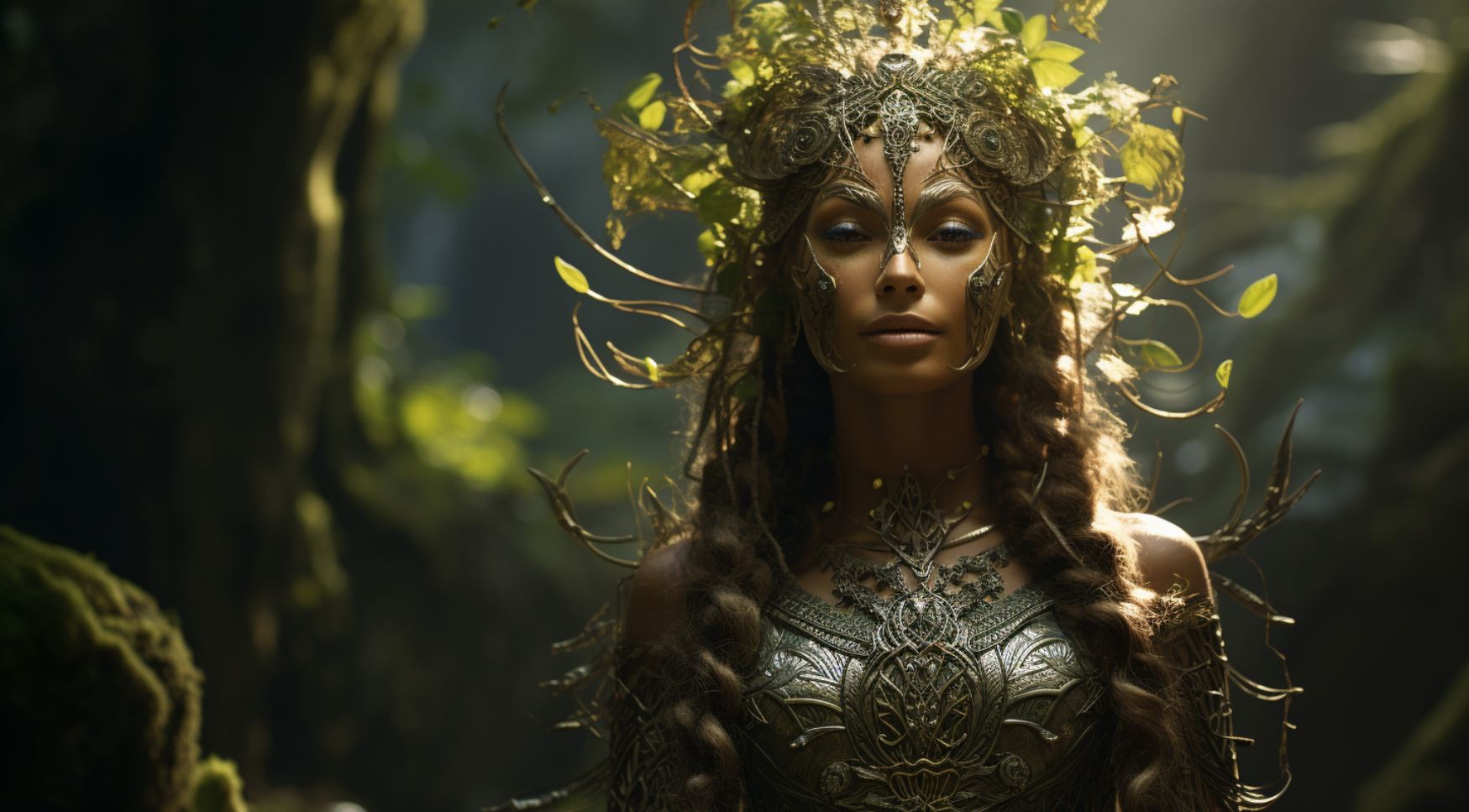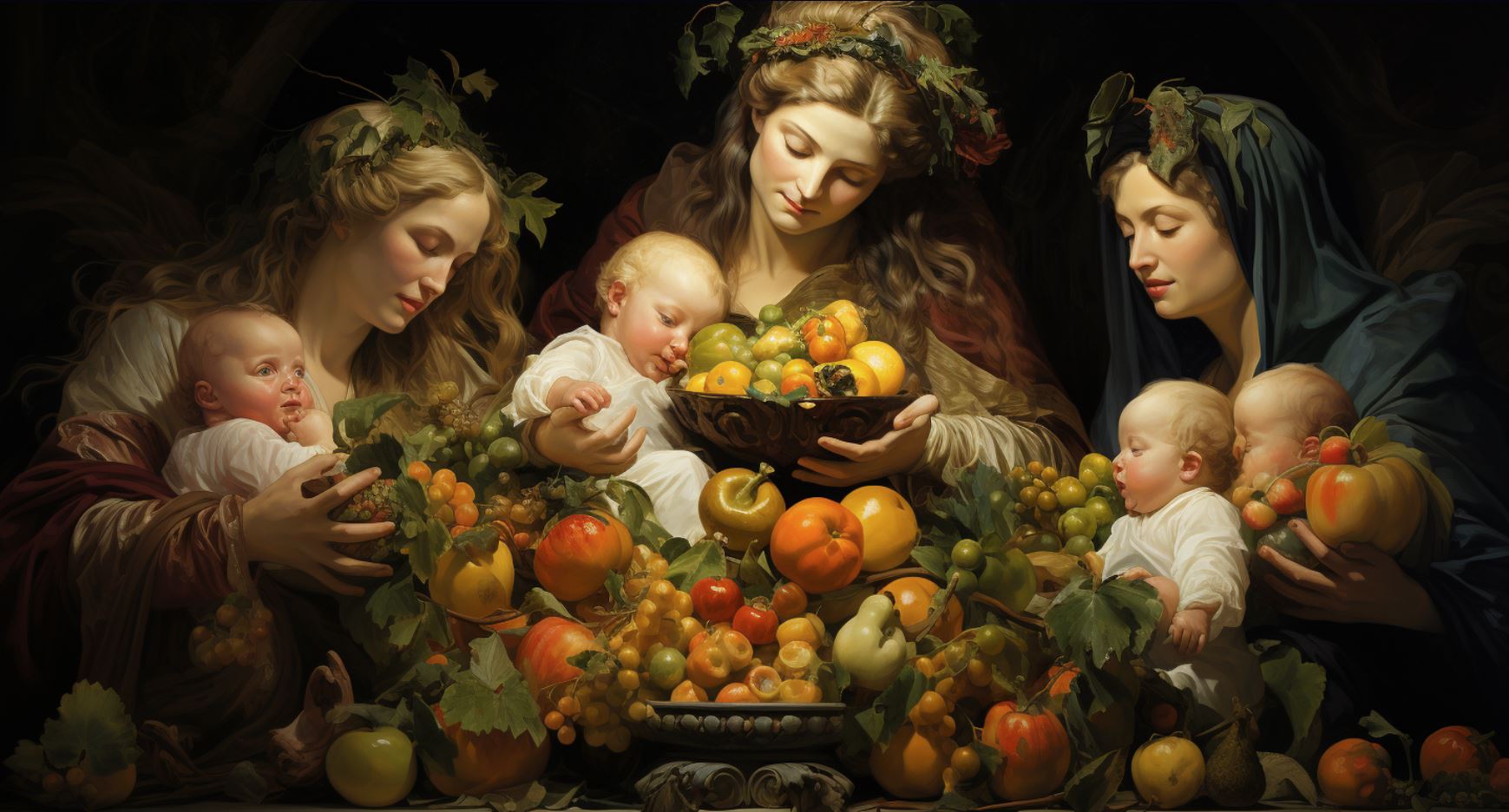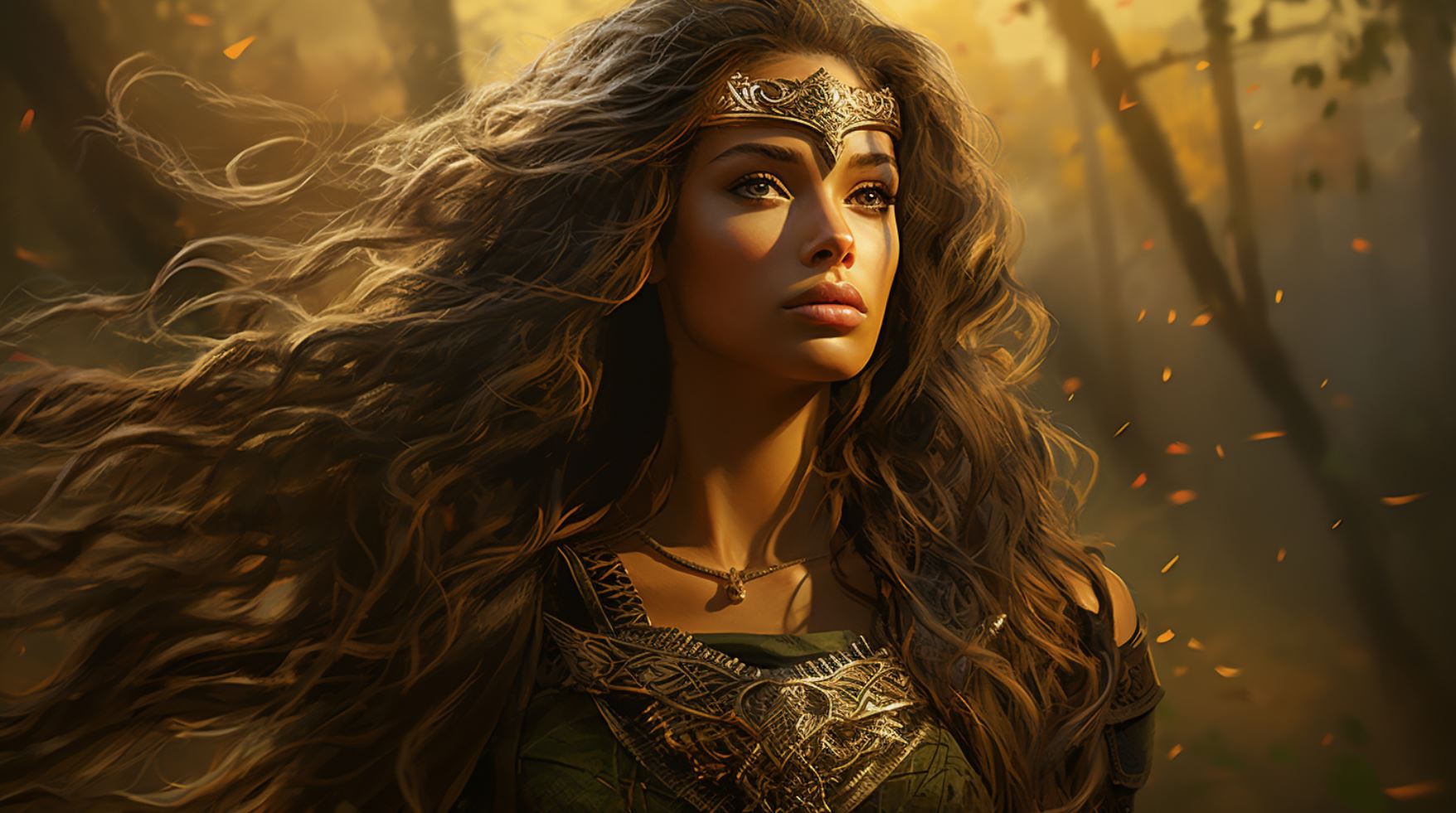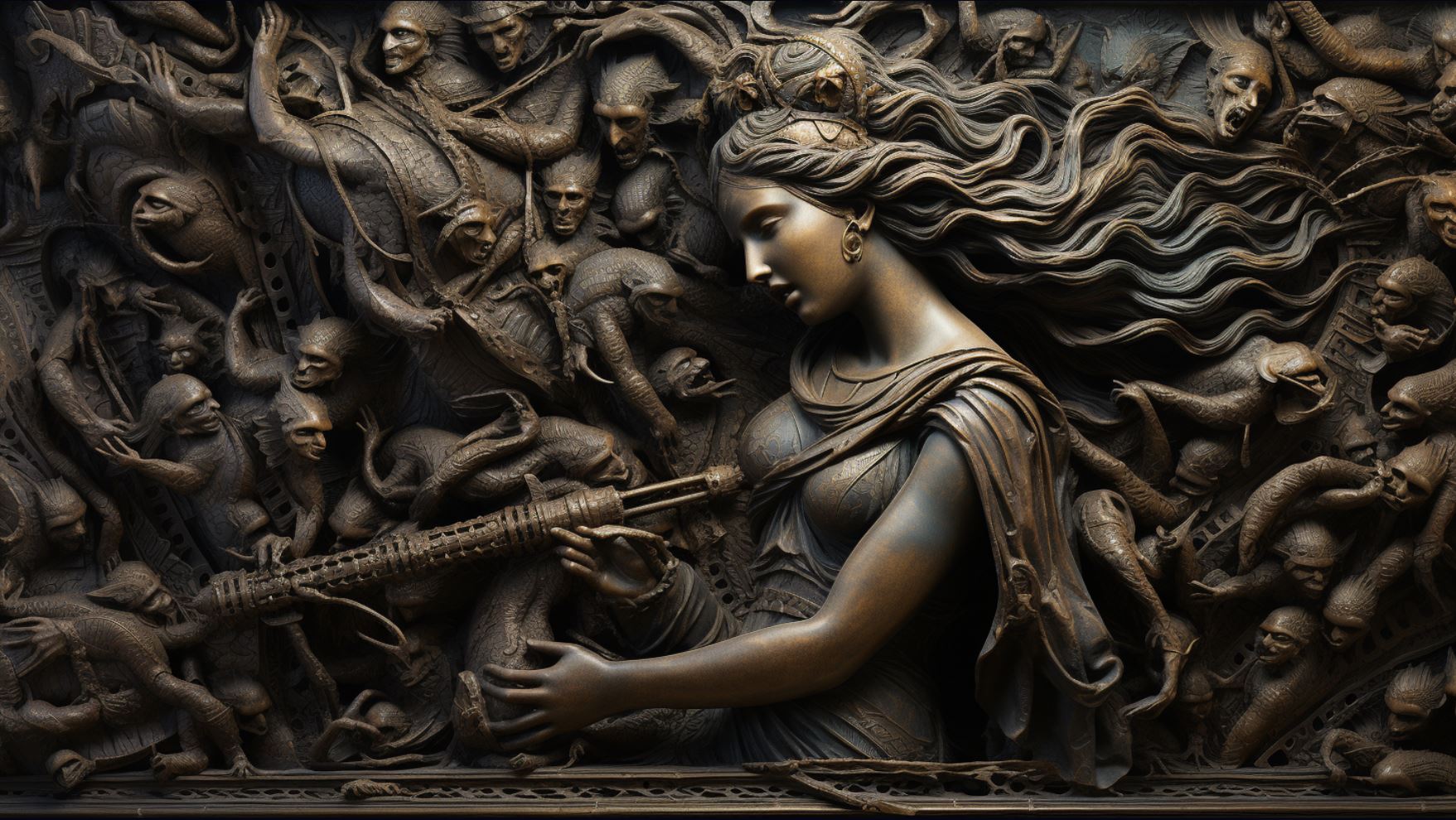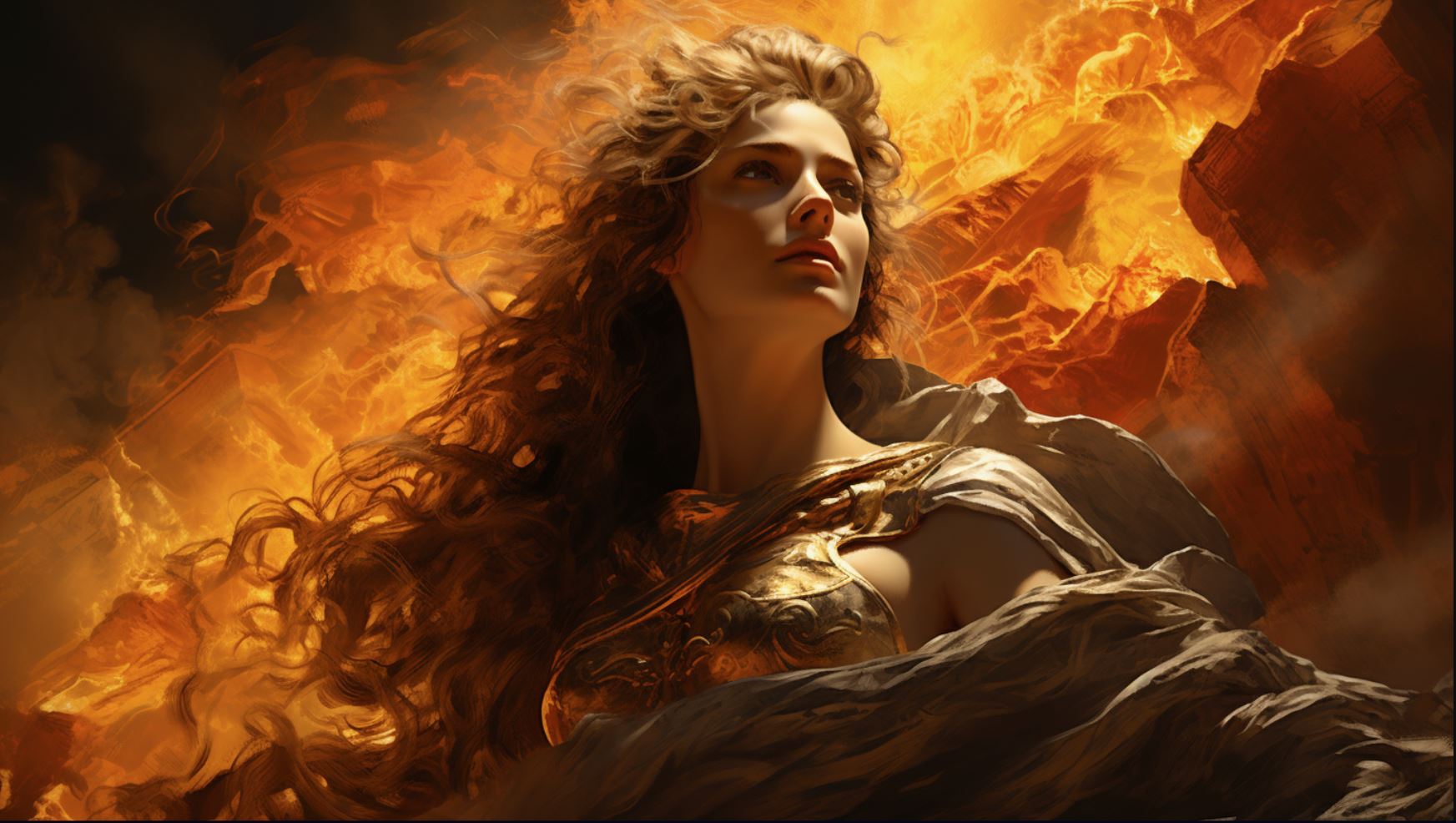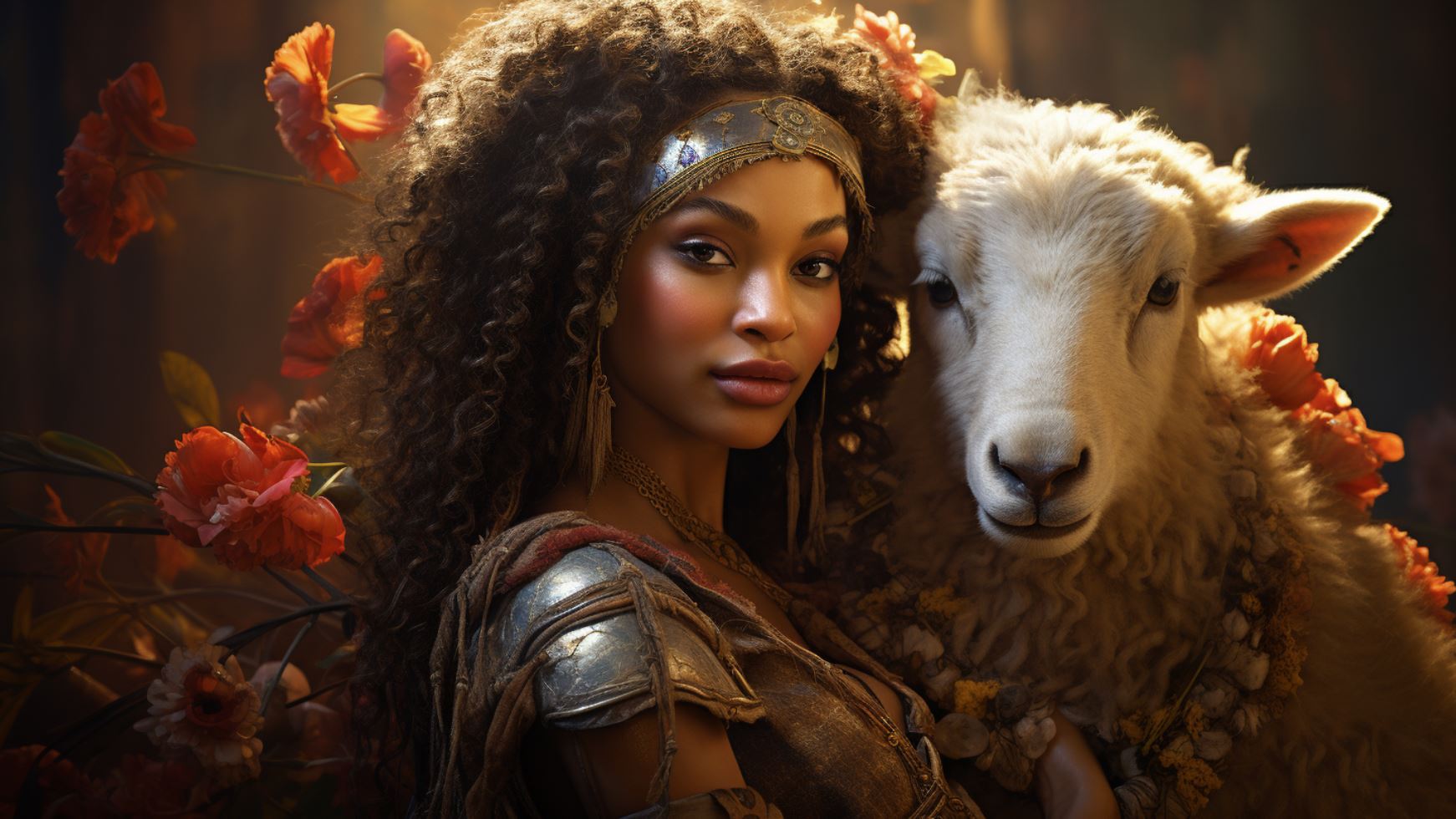Rosmerta Goddess: The Celtic Deity of Abundance and Prosperity
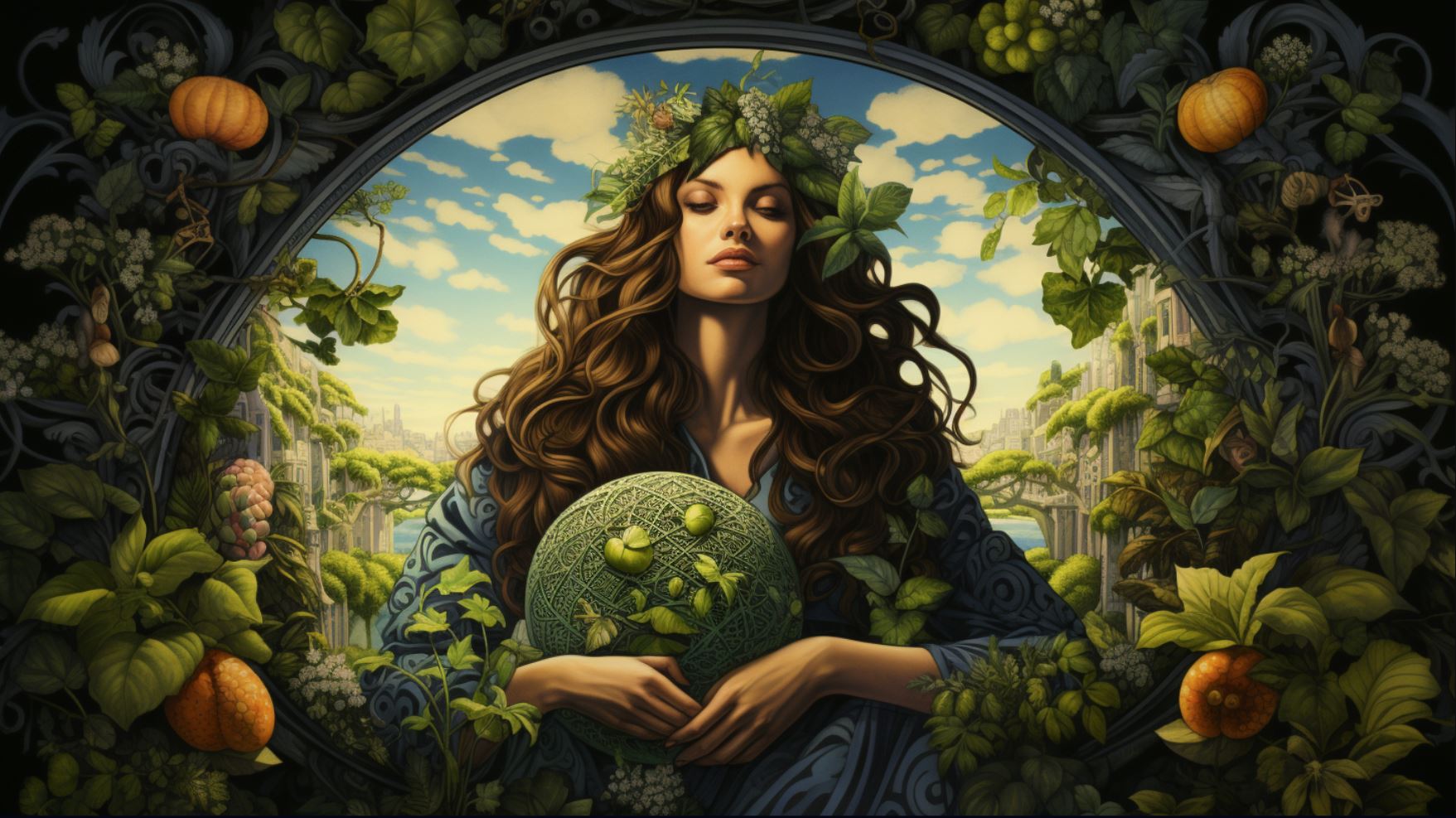
Rosmerta Goddess is a prominent figure in Celtic mythology, known as the deity of abundance, fertility, and prosperity. Her worship spanned across Gaul, the British Isles, and various regions of Celtic Europe.
Associated with therapeutic springs, she enjoyed great popularity in Gloucester. Rosmerta was considered a unifying force between Celtic, Roman, and Germanic cultures, with different consorts depending on the region, such as Mercury, Wotan, and Esus. Standing on her own, she was also revered without the need for a spouse.
After Christianity, many of Rosmerta’s functions were assimilated by Mary.
The Origin and Mythology of Rosmerta Goddess
The Celtic Deity of Abundance and Fertility
The ancient Celtic goddess known as Rosmerta held a significant place in the mythology of abundance and fertility. Revered by the Celts throughout Gaul, the British Isles, and various regions of Celtic Europe, Rosmerta was venerated as a symbol of prosperity, well-being, and bountiful harvests.
Her association with fertility made her a beloved figure among the Celtic people, who sought her blessings for the growth and abundance of their crops and livestock.
Her Associations with Roman and Gaulish Cultures
Rosmerta’s influence extended beyond Celtic culture, as she played a role in merging different belief systems.
In the context of Roman and Gaulish cultures, Rosmerta became intertwined with deities from these traditions. This assimilation exemplified the interconnectedness of different cultures, showcasing the way in which local beliefs and customs often influenced and merged with one another.
Different Consorts and Regional Variations
Throughout various regions, Rosmerta was believed to have different consorts. In some areas, she became associated with the Roman god Mercury, emphasizing her role as a bridge between Celtic and Roman cultures.
In other regions, she was linked with Wotan, a prominent deity in Germanic mythology, or with Esus, a Gaulish deity associated with prosperity and commerce. These regional variations demonstrate how Rosmerta’s mythology was shaped by local beliefs and traditions.
Symbols and Attributes of Rosmerta Goddess
The symbols and attributes associated with Rosmerta Goddess hold significant meaning within Celtic mythology, representing various aspects of abundance, offerings, and divine power.
Cornucopia and its Significance
The cornucopia, a horn-shaped basket filled with overflowing fruits and grains, is one of the most prevalent symbols connected to Rosmerta. It symbolizes abundance, plenty, and the fertility of the land.
As the Great Provider, Rosmerta bestows bountiful harvests and prosperity upon her worshippers.
Patera, a Symbol of Offerings
Another important symbol attributed to Rosmerta is the patera, a shallow ritual offering dish. It represents the act of giving and the exchange of gifts or tributes to the goddess. Through offerings, worshippers seek her favor and express gratitude for the blessings received.
The patera also symbolizes the reciprocal relationship between humans and the divine.
Understanding the Meaning of Her Various Tools and Accessories
Aside from the cornucopia and patera, Rosmerta is depicted with an array of tools and accessories that possess their own symbolic significance:
- A Wooden Bucket with Iron Straps: This item represents the connection between the earthly and spiritual realms.The wooden bucket signifies the earthly abundance and resources, while the iron straps symbolize the strength and power of the goddess.
- A Spoon: The spoon symbolizes the act of nourishment and the provision of sustenance.It represents Rosmerta’s role as the bestower of both physical and spiritual nourishment.
- A Torch: The torch signifies enlightenment, guiding individuals towards prosperity and inner illumination. It represents Rosmerta’s ability to shine light on the path towards wealth and well-being.
- A Double Axe: The double axe, often associated with the Celtic god Esus, represents power, protection, and the ability to cut through obstacles.Its presence alongside Rosmerta suggests her authority over prosperity and her ability to remove obstructions in the pursuit of abundance.
- A Scepter: The scepter symbolizes authority and divine sovereignty. It reflects Rosmerta’s role as a revered goddess of abundance, fertility, and prosperity.
These symbols and attributes collectively reflect the multifaceted nature of Rosmerta’s power and her vital role in Celtic mythology as a bestower of prosperity and well-being.
Rosmerta Goddess: The Great Provider
Rosmerta Goddess plays a vital role in cultivating prosperity and material well-being in Celtic mythology. As the deity of abundance and fertility, her influence extends beyond mere sustenance, encompassing the overall prosperity of individuals and communities.
Her Role in Cultivating Prosperity and Material Well-being
Rosmerta’s role as the great provider revolves around ensuring the material prosperity and overall well-being of her worshippers. She bestows blessings of abundance, ensuring plentiful harvests, prosperous businesses, and general good fortune.
Her presence brings about a sense of security and affluence within the Celtic community.
In her embodiment as the goddess of fertility, Rosmerta also fosters the growth and prosperity of families and relationships.
She represents the bountiful aspects of life, facilitating the flourishing of love, fertility, and the continuance of generations.
Comparison with Other Goddesses of Abundance and Fertility
In comparing Rosmerta Goddess with other deities associated with abundance and fertility, we find intriguing parallels and unique distinctions. While Rosmerta embodies the Celtic perspective on prosperity, she shares similarities with other goddesses such as Demeter in Greek mythology and Ceres in Roman mythology.
These goddesses represent the fundamental concept of fertility, ensuring the sustenance and well-being of their respective cultures.
However, Rosmerta’s distinction lies in her specific association with material wealth and prosperity. Unlike some other fertility goddesses whose focus primarily revolves around agriculture and harvest, Rosmerta encompasses a broader scope of material well-being, including commerce, trade, and economic prosperity within the Celtic society.
The Influence of Rosmerta in Roman Religion and Culture
Rosmerta’s significant influence transcends the Celtic pantheon and extends into Roman religion and culture. As the Celtic-Roman cultural exchange and integration flourished, Rosmerta became interconnected with Mercury, the Roman god of commerce and trade.
This syncretism of deities highlights the cultural synergy between the Celtic and Roman traditions, resulting in a unique amalgamation of beliefs and practices. Within this context, Rosmerta’s role as the great provider aligns seamlessly with Mercury, representing the prosperous and fertile forces that govern both the spiritual and material aspects of life within the Roman society.
The veneration of Rosmerta also highlights the importance of economic prosperity and well-being in the Roman world. Her influence in Roman religion and culture underscores the recognition of abundance and prosperity as essential aspects of a thriving society.
- Her role as the great provider encompasses overall prosperity and material wealth
- Comparison with other goddesses reveals parallels and distinctions
- The influence of Rosmerta extends into Roman religion and culture
In conclusion, Rosmerta Goddess assumes the role of the great provider, cultivating prosperity and material well-being within Celtic mythology and influencing wider Roman beliefs.
Her significance in fostering abundance and ensuring the continuity and affluence of individuals and communities solidifies her standing as a revered deity in both ancient and modern times.
The Legacy of Rosmerta Goddess in Modern Times
The influence of Rosmerta Goddess continues to resonate in modern times, captivating various perspectives and leaving a lasting imprint on art, literature, and cultural discourse.
As we delve into the legacy of this revered deity, we uncover its contemporary significance and explore the enduring fascination it evokes.
Contemporary Perspectives on Rosmerta
Today, Rosmerta Goddess is a subject that enthralls scholars, historians, and enthusiasts alike. Through academic research and critical analysis, contemporary perspectives shed light on the multifaceted nature of her cult, examining its historical context and cultural implications.
Researchers explore her permutations across different regions, unearthing evidence that contributes to our understanding of Celtic, Roman, and Germanic influences.
Popularity and Representation in Art and Literature
Rosmerta’s artistic and literary representation exemplifies her enduring allure. From intricate sculptures and captivating paintings to captivating stories and poems, artists and writers have captured her essence and continued to bring her to life.
These artistic renditions not only reflect the beauty associated with her, but also serve as a visual and literary testament to her significance.
- Historical paintings immortalize Rosmerta’s elegance and prospering attributes
- Sculptures depict her with arms outstretched, symbolizing abundance
- Writer’s craft stories and poems that showcase her benevolence and impact on mortal lives
Exploring Rosmerta’s Relevance and Influence Today
The enduring relevance of Rosmerta Goddess extends beyond academia and artistic representations.
The impact she has had on culture, rituals, and practices can still be observed in various aspects of contemporary societies. As we examine the remnants of her worship, we unveil connections to concepts of abundance, prosperity, and the interconnectedness of nature and humanity that continue to inspire individuals today.
- Her portrayal as a provider aligns with modern concerns for material well-being and success
- Her association with fertility and abundance resonates with individuals seeking harmony and prosperity in their lives
- Certain cultural practices and traditions still pay homage to her, reinforcing her enduring influence
As we navigate the modern world, the legacy of Rosmerta Goddess reminds us of the enduring power of mythological entities and their capacity to transcend time.
Through contemporary perspectives, artistic representations, and continued cultural relevance, Rosmerta’s impact remains palpable, inspiring contemplation, and invoking a sense of wonder.












